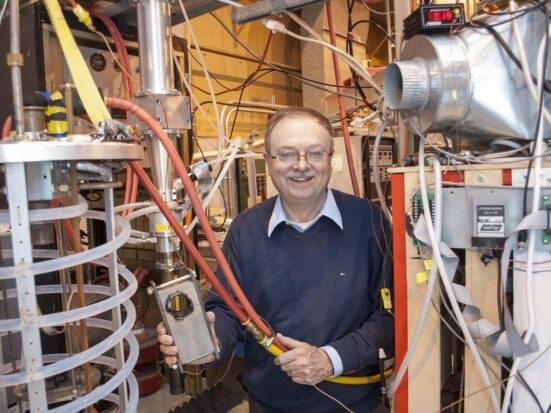Get the latest international news and world events from around the world.
Faster-Than-Light Travel Could Work Within Einstein’s Physics, Astrophysicist Shows
For decades, we’ve dreamed of visiting other star systems. There’s just one problem – they’re so far away, with conventional spaceflight it would take tens of thousands of years to reach even the closest one.
Physicists are not the kind of people who give up easily, though. Give them an impossible dream, and they’ll give you an incredible, hypothetical way of making it a reality. Maybe.
In a 2021 study by physicist Erik Lentz from Göttingen University in Germany, we may have a viable solution to the dilemma, and it’s one that could turn out to be more feasible than other would-be warp drives.

SpaceX prices fast Starlink satellite Internet for ships, yachts, and oil rigs at US$5,000 with the highest download speeds
Barely did the ink under the FCC approval signature dry, and SpaceX’s Starlink satellite Internet announced a new pricey Maritime service for commercial ships, oil rigs, or premium yachts. Nothing is stopping people with recreational boats to get Starlink Maritime, too, save for the monthly tag and equipment fees.



Top 10 Weirdest Programming Languages in Use in 2022
Programmers need a useful and reliable programming language to use for coding purposes to offer seamless applications. How many programmers do you know to use a weird coding language for applications? Yes, there are multiple weirdest programming languages for programmers with some of the unique features to be a coding language. The use of a weird coding language is not trending in multiple reputed tech companies, but the programming language is useful if programmers want to enhance their portfolios. Let’s dive into the top ten weirdest programming languages for programmers to use as a coding language in 2022 for seamless applications.
Whitespace is one of the top ten weirdest programming languages for programmers with a reference to whitespace characters. The coding language is an imperative stack-based language with only space, tabs, and linefeeds that have meaning. The code in the weird coding language is written as an IMP (Instruction Modification Parameter).
Befunge is a weird coding language as well as one of the oldest and most-famous 2-D coding languages. Befunge-93 is known for specifying multiple sets of commands with unusual syntax to create programmes. One of the weirdest programming languages processes the input string character-by-character. It uses a unique data model and instruction set to perform computations on a coordinate grid.
Japanese researchers are developing artificial-gravity buildings for space
A research team from Japan plans to put a prototype of an artificial-gravity building on the Moon by 2050.
Asteroid Bennu is essentially a ball of cosmic confetti — studies
The lightly-packed surface of a near-Earth asteroid is cool and a little scary.

What is a Thought? How the Brain Creates New Ideas | Henning Beck | TEDxHHL
How does the human brain work and how is it different from computers? If you think this is too complex to explain in a few minutes, you will be surprised. In this energetic and insightful talk, neuro-scientist Dr. Henning Beck gives insights into thought processes and tells you how you can create new ideas.
Dr. Henning Beck, neuroscientist and author, supports businesses to use brain-based approaches in order to develop innovative and efficient workflows. He studied biochemistry in Tübingen from 2003 to 2008. After his diploma thesis, he started his research at the Hertie Institute for Clinical Brain Research and intensified his work at the Institute of Physiological Chemistry at the University of Ulm. Supported by a PhD scholarship granted by the Hertie Foundation he did his doctorate at the Graduate School of Cellular & Molecular Neuroscience in Tübingen. He expanded his scientific expertise by an International Diploma in Project Management at the University of California, Berkeley in 2013. Until 2014, he worked for start-ups in the San Francisco Bay Area to develop creative workspace designs and advanced communication styles based on neuroscientific principles.
This talk was given at a TEDx event using the TED conference format but independently organized by a local community.